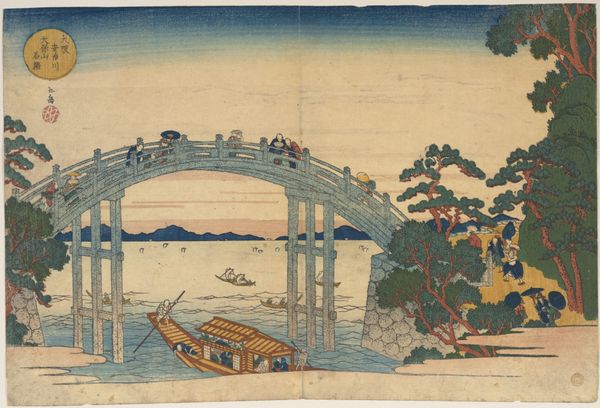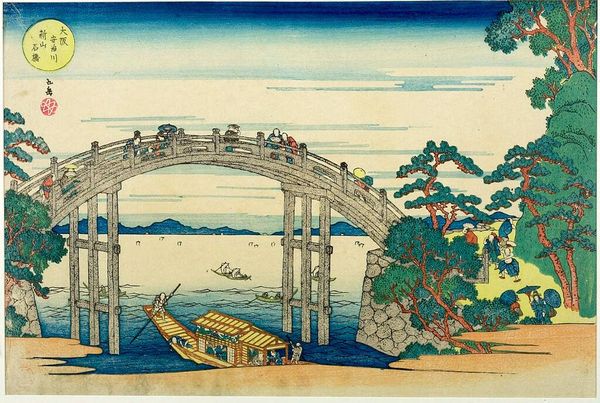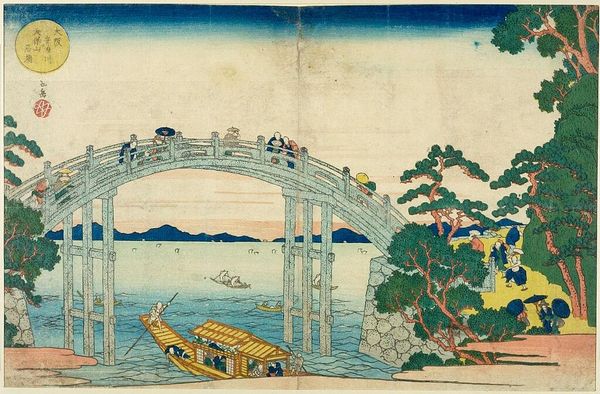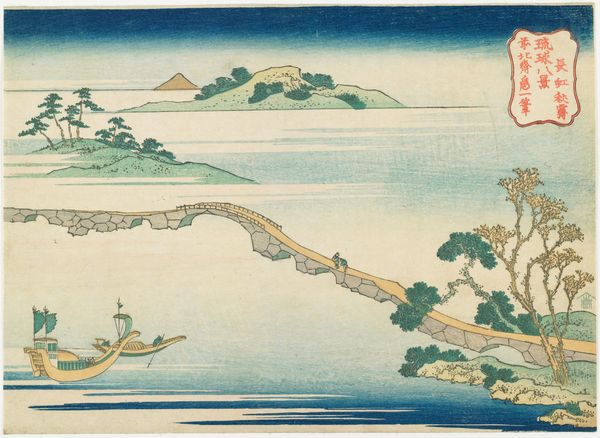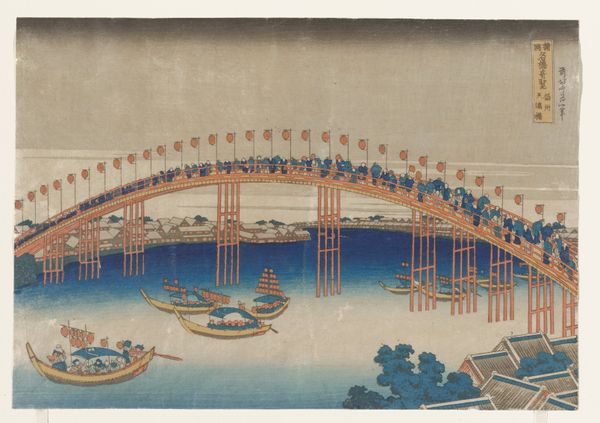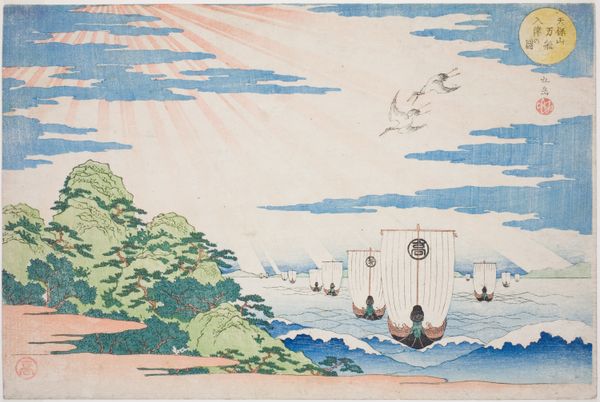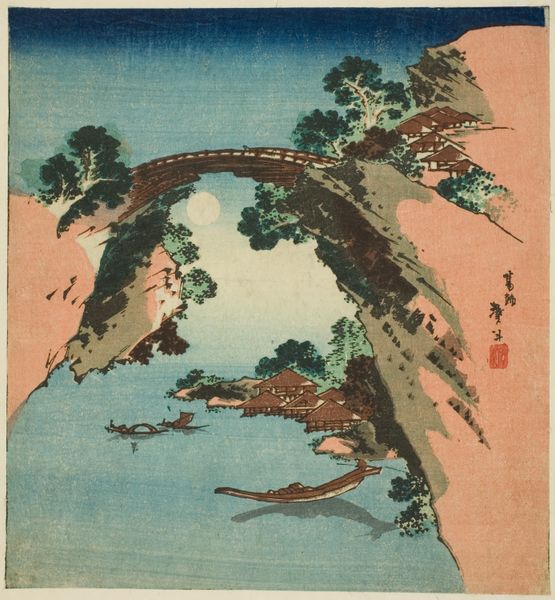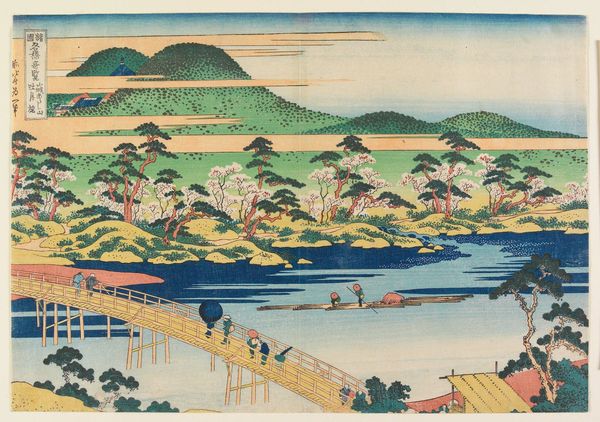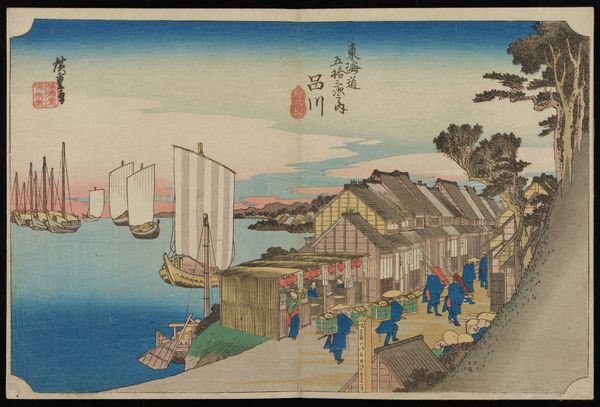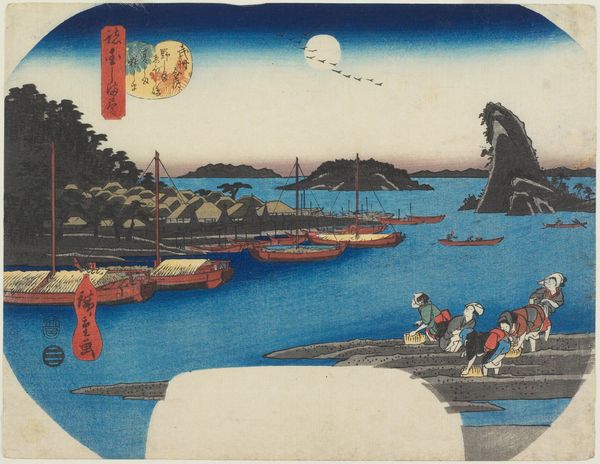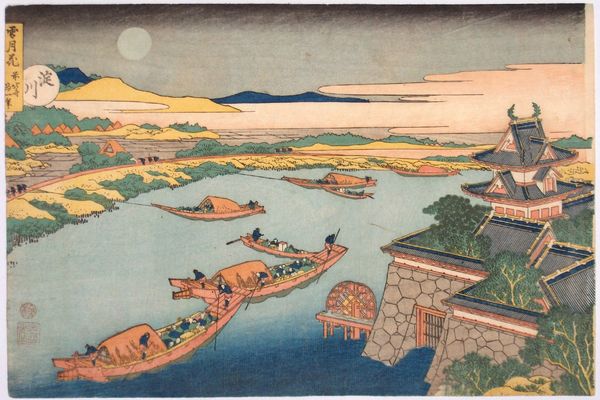
The Stone Bridge over the Aji River near Nii Hill, Osaka (Osaka Ajigawa Niiyama ishibashi), from the series "Famous Places in Osaka: Fine Views of Mount Tenpo (Naniwa meisho Tenpozan shokei ichiran)" c. 1834
0:00
0:00
print, woodblock-print
#
water colours
# print
#
asian-art
#
landscape
#
ukiyo-e
#
woodblock-print
Dimensions: 26.5 × 38 cm (10 1/2 × 14 15/16 in.)
Copyright: Public Domain
Editor: We're looking at "The Stone Bridge over the Aji River near Nii Hill, Osaka," a woodblock print from around 1834 by Yashima Gakutei. It feels like a snapshot of everyday life, but the perspective is slightly… off, almost dreamlike. What catches your eye in this piece? Curator: Well, this work, part of the Ukiyo-e tradition, speaks volumes about the commercialization of art and leisure in 19th-century Osaka. Consider the “famous places” series. It suggests a growing interest in travel and local tourism amongst a burgeoning middle class, doesn't it? These prints weren't just aesthetic objects, they were advertisements, souvenirs. Editor: So, like a postcard then? Curator: Precisely! But also carefully constructed cultural artifacts. Note how the bridge, the Aji River, and Mount Tempo— barely visible on the horizon — are presented. They reinforce Osaka's identity as a center of trade and natural beauty. What is being omitted, however, and who controls this depiction of public life are equally worth noting. Editor: I see what you mean. It’s a curated view of Osaka. Was this meant for local consumption or export? Curator: Both. Ukiyo-e prints gained popularity abroad in the late 19th century, shaping Western perceptions of Japan. Think of Japonisme and its impact on artists like Van Gogh. Gakutei’s print played a small but significant role in this cross-cultural exchange. And it is necessary to understand the art market system that this particular work emerged from, as well. Who had the means and exposure to consume it? How was it viewed at that moment, and does the value we assign it today diverge greatly? Editor: So, a seemingly simple landscape is actually embedded in layers of social and economic history. I hadn’t considered the commercial aspect so directly before. Curator: Exactly! That tension between artistic expression and market forces makes studying Ukiyo-e so compelling. Understanding the role and agency of its consumer gives its creation additional meaning. Editor: I definitely have a richer understanding of it now! It makes me question how we perceive images and their place within society.
Comments
No comments
Be the first to comment and join the conversation on the ultimate creative platform.
